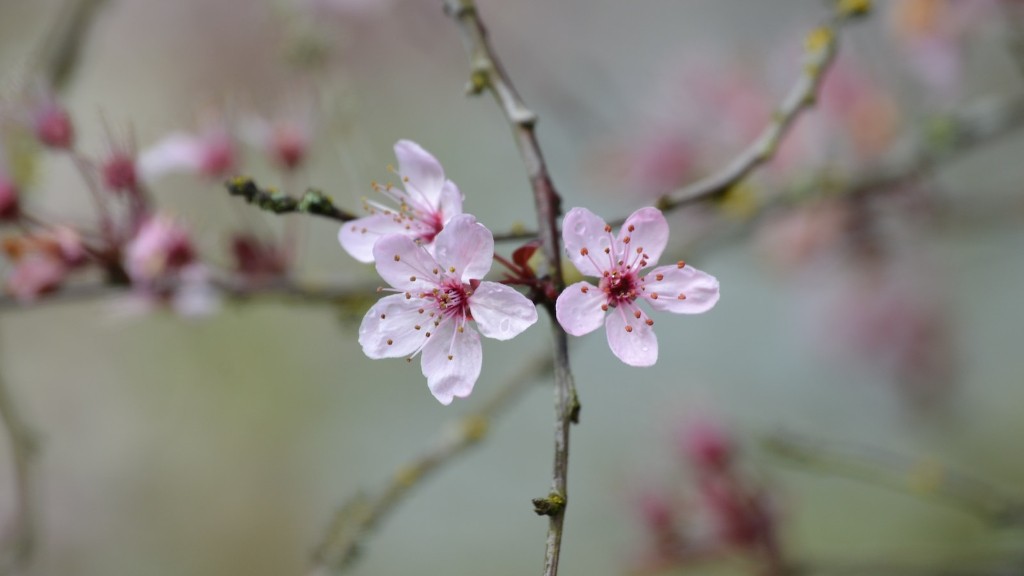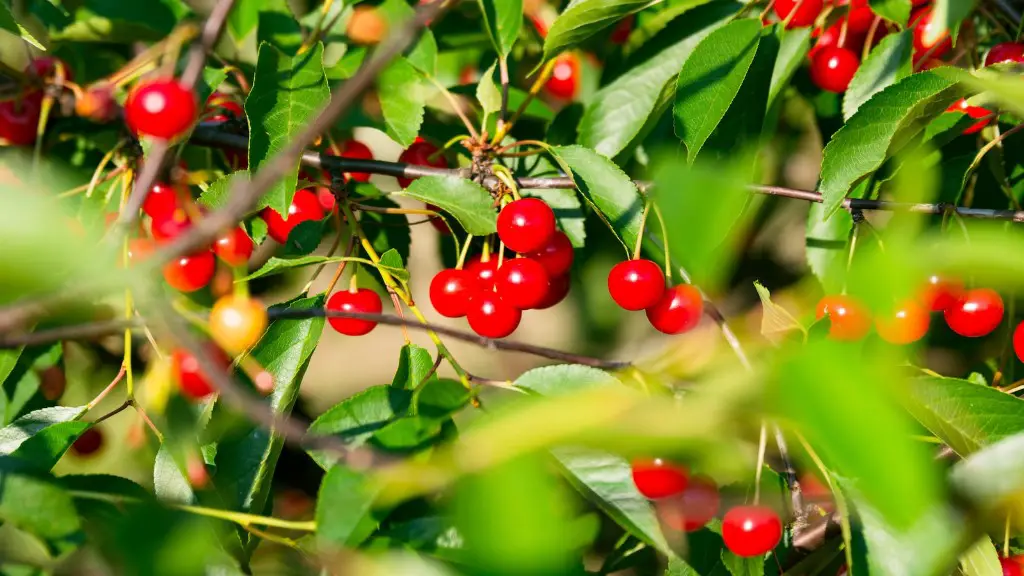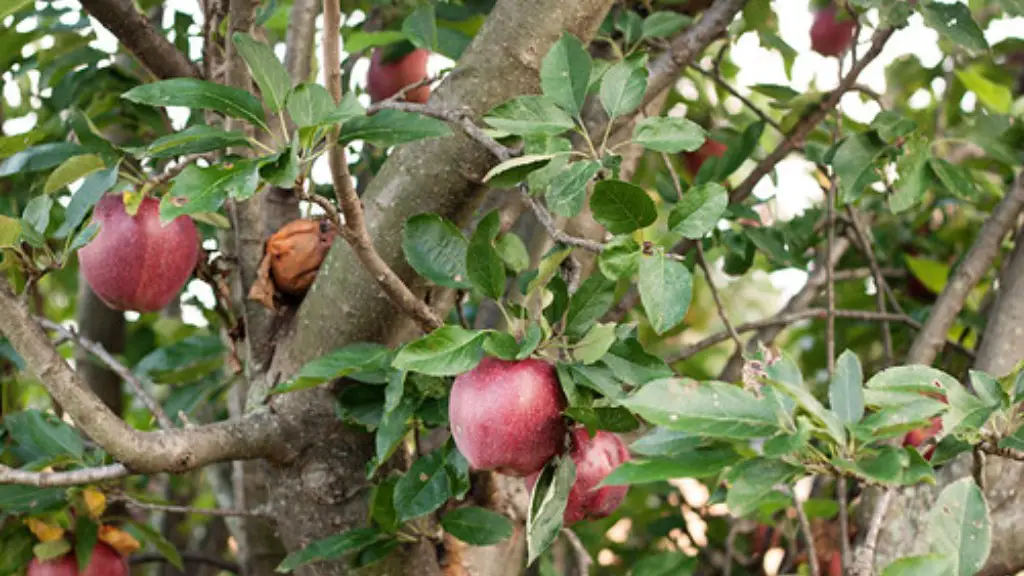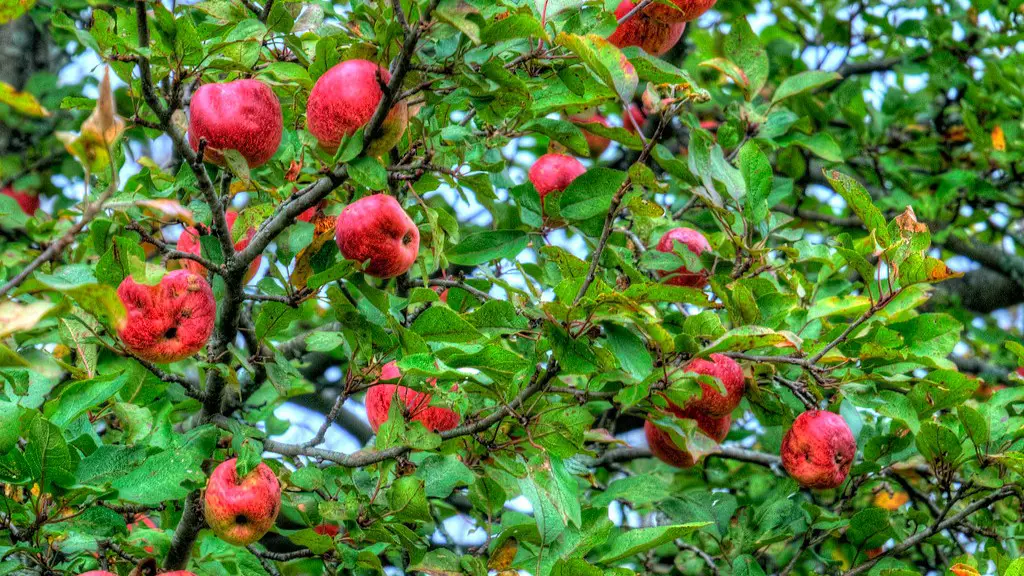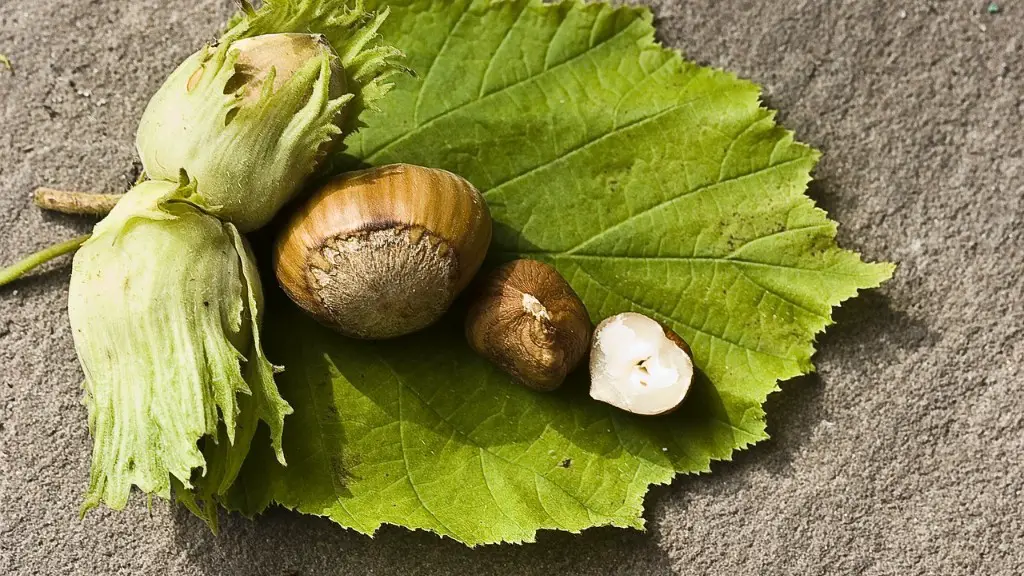Pruning a miniature apple tree is essential to its health and development. Doing it correctly can help ensure your tree is healthy, fruitful, and attractive. Here are the steps you need to take to prune your miniature apple tree with optimum success:
First, clear away any dead or damaged branches. Look for branches that are damaged by pests or diseases, or those that are twiggy, weak, or have crossed each other. Cut those branches off, then tidy up any jagged edges with a pruning saw.
Next, identify the dominant central leader. If left unchecked, multiple leaders can form, weakening the structure of the tree. To combat this, choose the one leader that is the healthiest and strongest and prune away any other leaders developing.
Then, prune branches that are growing inward towards the trunk, as these will end up becoming crowded and unhealthy. Make a 45-degree angle cut with a pair of bypass pruners, away from the trunk and slanted toward the outside.
After that, open the center of your tree to allow more light penetration, pruning back any branches that are growing at right angles or creating shade. Cut the branches back to a side bud and take care not to cut too far or too deeply.
Fourthly, prune any vigorous branches that may be too long or overbearing. Cut them back to a dominant bud and make sure not to leave a stub. Pruning in this way will maintain the symmetry of the canopy and balance.
Finally, remove suckers and water shoots arising from the base of the tree. Water shoots grow from the rootstock and require annual removal to improve the chances of a successful crop.
Tips for Pruning a Miniature Apple Tree
When pruning a miniature apple tree, a few tips can help you get it just right. Don’t be tempted to shape your tree into a box or a hedge, as this can be damaging to the tree’s overall health. Instead, use the five basic principles of Crown Art – evenness, thickness, length, balance, and spacing – to create the right shape for your tree.
When making repairs, always start by removing the affected branch entirely. Then, use healthy sprouts that match the size of the tree, not just the size of the gap left behind.
Lastly, protect yourself while pruning. Wear gloves, long sleeves, and eye protection while at work. Additionally, sterilise your tools between cuts. This will help prevent the spread of disease.
Tools Needed for Pruning a Miniature Apple Tree
Before beginning to prune, it’s important to make sure you have the right equipment for the job. You’ll need a pair of bypass pruners, a pruning saw, a bow saw, and a good pair of leather gloves.
Bypass pruners come in a variety of sizes, so be sure to choose a size that fits your hand. A pruning saw is the best option for medium- to larger-sized branches. Bow saws are useful for pruning large branches. For safety, a pair of leather gloves will help keep your hands safe from thorns and sharp edges.
When to Prune a Miniature Apple Tree
Pruning your miniature apple tree should be done at the end of the winter, before the buds come out and the tree begins to produce fruit. Pruning at any other time may result in the tree dropping its fruit, so stick to this timing for best results.
Be sure to match your pruning method to the tree’s growing season, as this will promote the most growth and fruit production. If you’re pruning in a warm climate, it’s best to prune lightly in late winter and then again in late summer. If you’re in a cooler climate, prune in late winter, late summer, and then again early in the Spring.
If your tree is looking a bit unruly, don’t be afraid to do some light pruning in the summer months. This will help prevent the branches from becoming too big and unmanageable.
How to Prune Out of Season
If you need to prune your miniature apple tree out of season, you should use caution. Start by pruning away any dead or diseased branches. Then, you should remove any crowding that could restrict air and light flow to the tree.
When it comes to shaping and balance, prune sparingly. Take out weak branches, and use some care when trimming back strong ones. Make sure not to prune too much at once. Remember, it’s better to prune too little than too much.
In general, try to avoid pruning when the temperature is below 30°F. If you must prune, make sure to practice branch by branch pruning. This will allow you to prune without causing too much shock to the tree.
Safety Tips
When pruning your tree, safety should always come first. Make sure to wear a pair of heavy duty leather gloves to protect your hands from thorns and sharp edges. Wear long sleeves, and if possible safety goggles, to protect your eyes and face.
Also, make sure to keep your tools sharp, clean, and lubricated to prevent cuts or damage to the branches. And, never climb up a ladder when pruning a tree. Instead, use a long-handled pole pruner to reach high branches.
Training and Trimming
Regular training and trimming can also help shape and balance your miniature apple tree. Be sure to prune away any broken or crossed branches, and keep the excess vegetation in check. This will allow for adequate light and air circulation, and reduce the competition for water and nutrients.
Additionally, to ensure the tree grows evenly, a few “lifting” cuts can be made on the outside of the tree to encourage the limbs to grow outward. This will help create an open and even canopy to let in more light.
Finally, training your tree will help it develop an optimal shape, which will also help it to bear fruit. To encourage branching, periodically pinch off the tips of new shoots. This will encourage growth outwards, rather than straight up.

